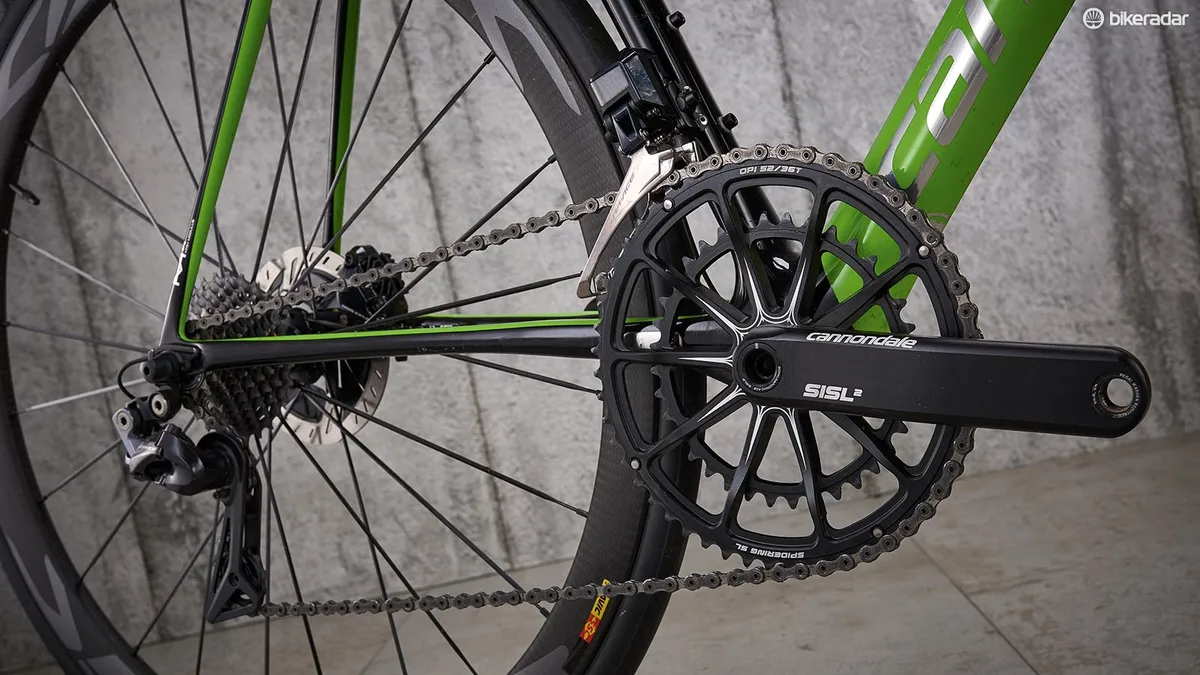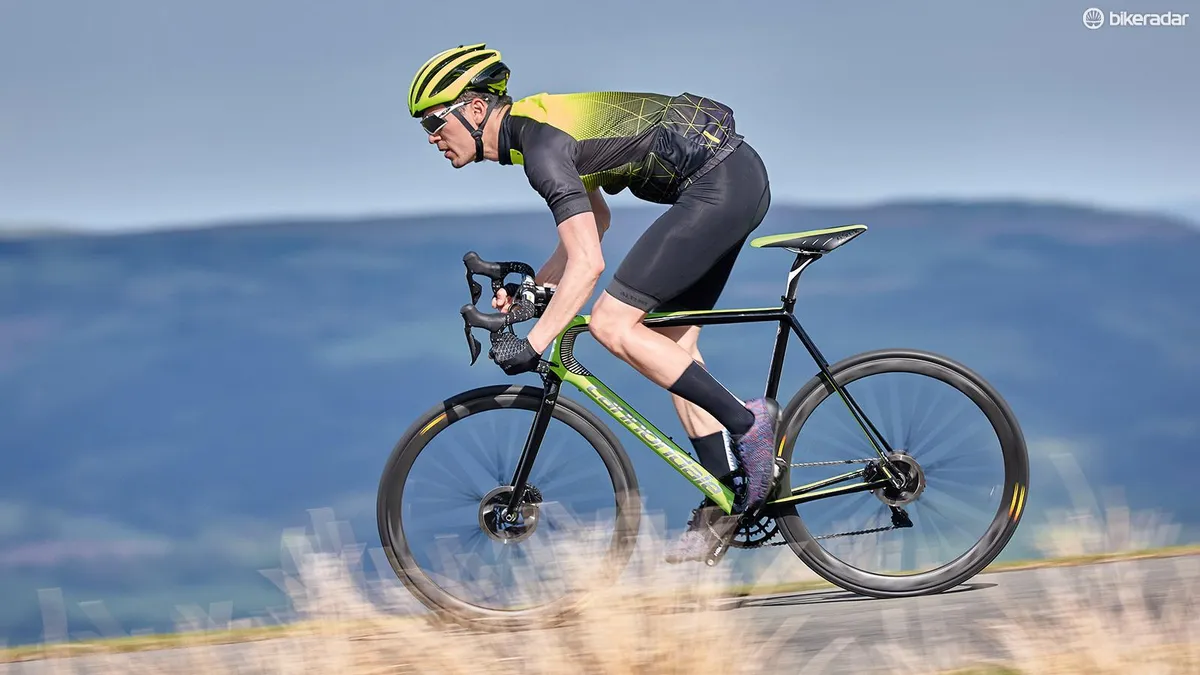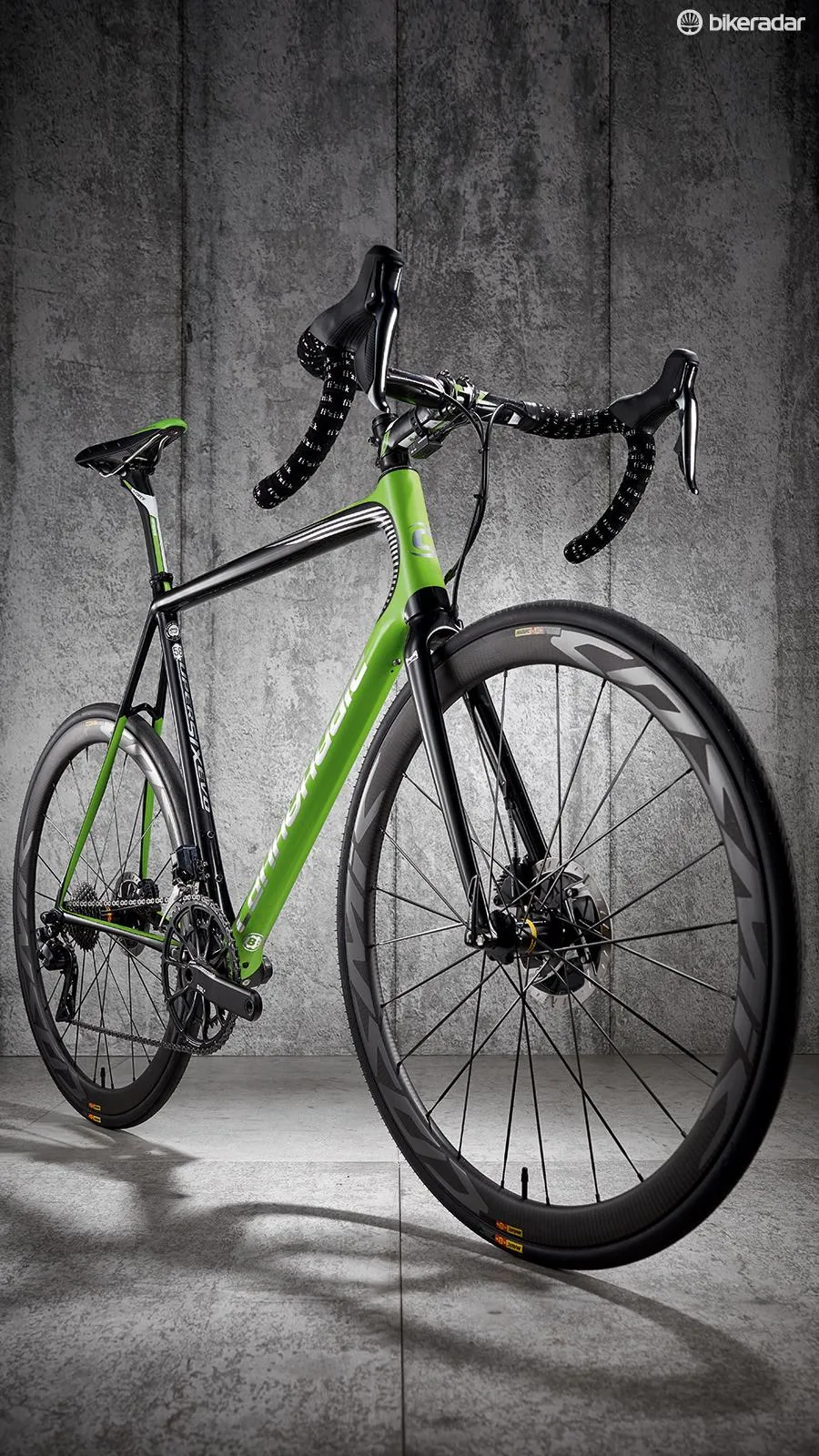The standard rim-brake Evo is something of a legend, it’s a bike that's been consistently praised in all its versions. It took a while for Cannondale to add disc brakes to the mix, after the last update to the Evo frame and fork in 2016, because it wanted to ensure it was imbued with the same lightness and handling the bikes are famous for.
It has succeeded — the Evo Disc is a sublime-handling bike. On paper it’s a close-run thing to the rim-brake bike — the frame weight (56cm) is 829g, just 52g heavier than the rim version and the fork 360g 40g heavier, a net gain of 92g, 120g when you add in the extra hardware. It's easy to live with that, when you get the benefits of the new Shimano Dura-Ace 9170 stoppers.
As soon as you start to power the pedals, the sense of urgency, sharp pick-up and acceleration come from the stiffness through the frameset and superb SiSL2 chainset with its unique 10-arm one-piece machined ring combination. The SiSL2 is a beautiful design, and lighter than the Dura-Ace chainset it replaces.

The handling and sharpness of the steering match the rim-brake version, the responses are sharp so you can dart between riders, make last-minute direction changes to avoid potholes and when you put it into corners it feels precise, fast and stable.
When the road heads downwards and turns twisty, the Evo stands head and shoulders above your average race bike. It feels so wonderfully nimble due to Cannondale retaining the same geometry as the rim-brake model.
As with most of its rivals the Evo comes with the latest Dura-Ace Di2 9170. The shifting is without compromise and you can switch between modes, standard shifting, semi-auto (where it shifts the rear up or down to compensate when you shift the front mech) or auto, which auto shifts the front mech as you move up and down the rear block.
I’d prefer Cannondale to have used the latest bar-end plug control and charging port rather than the older under-stem mounting model, as it looks a little cleaner, but that’s only a small niggle.

Unlike its rivals, the Evo has stayed with a standard quick-release axle at the rear, according to Cannondale to make for faster rear wheel changes in races. As the rear has a theoretically less rigid fixing for the wheel, you think you may get a bit of rub, flex or noise, but in reality you don’t notice.
Cannondale has been able to beef up the rear-end stiffness due to the compliance it engineers into the Delta tube seat-tube and its super-slim 25.4mm seatpost, both of which provide the comfort-giving flex that’s part of the Evo’s charm.

The latest Mavic Cosmic carbon disc wheels are wider and better shaped than before, and performed admirably in some fierce crosswinds on one of my test rides. They come with Mavic’s own Yksion Pro tyres, which are grippy, supple and measure up generously on the carbon rims.
Overall, the Evo may be a little longer in the tooth than the debutantes from Cervélo and Specialized, but it’s still a stunning bike. Class like this lasts, with the Evo’s handling chops making it a serious challenger when it comes to racing with discs.


